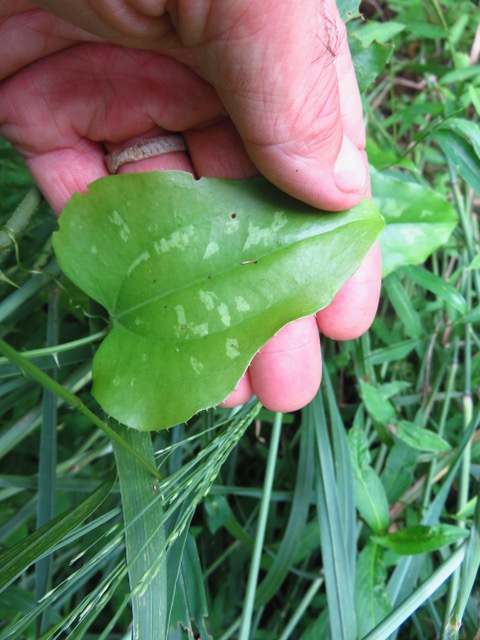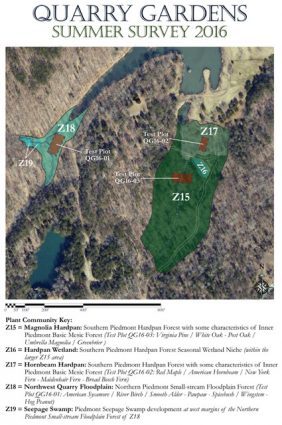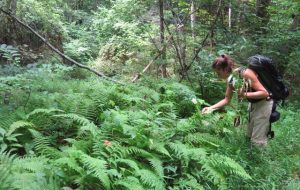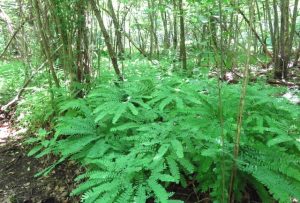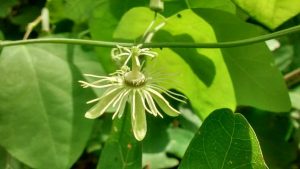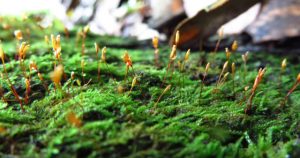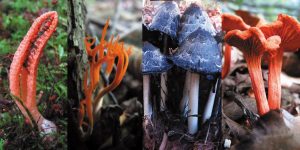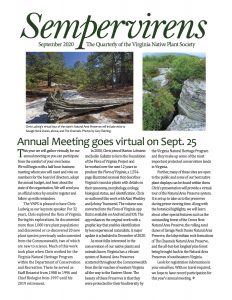November 5.
The featured image is of Smilax bona-nox, AKA catbrier, a kind of vigorous (variegated, prickly-leaved) greenbrier not previously reported in Nelson County, discovered by the Summer Survey of the area across the Quarry Gardens entrance road from the main quarries site and of the woods north of the quarries, wherein lie some different ecosystems. Near the end of July, the Center for Urban Habitats team surveyed and classified these areas. Their 36-page survey report notes 190 species, including 157 flora, 17 fauna, 13 fungi, and 3 lichens—46 new to the 40-acre site. (The “survey” link within the “Gardens” section of this website lists all of the 525+species so far identified.) Here is what the new zones look like. The quarries are the blue areas in the lower left.
Within a Low Elevation Mesic Forest, one small area (Z16) almost defies description, as no official “Piedmont Hardpan Wetland” currently exists in the Virginia Natural Heritage Division’s classification scheme; this area will have top priority for conservation.
In three new ecosystem types, the survey describes five ecozones (added to the 14 ecozones and seven conservation areas earlier mapped around the quarries). The newly classified types include a magnolia hardpan forest, a hornbeam hardpan forest, and a floodplain forest. We plan not to add plants to these areas, but rather to manage alien invasive species and provide low-impact access for those who have the energy and interest to explore.
In other news, we enjoyed morning visits from 17 members of History Group #7, Lake Monticello Newcomers, on 10/27, and from a group of 19 nearby gardeners and industrial history buffs on 10/29.
The interior of the Visitor Center has been sprayed with insulation, wiring is nearly complete, solar panels installed, and major grading done for the entrance gardens. (More on this in the next post.)
(On the warm afternoon of the 29th, Armand came across a couple young men who had trespassed in order to take a swim. He advised them of the quarries’ history as a dump site—there are some 40 feet of refuse under the 40-plus feet of water—and suggested they have a good bath when they get home.)
Some pictures: Below, Rachel collecting specimens for the lab.
Colony of Maidenhair Fern (Adiantum pedatum) found in the Hornbeam Hardpan Forest wetland area.
Yellow Passion Flower (Passiflora lutea) among 71 herbaceous species found in the Magnolia Hardpan Forest.
Moss in flower.
Devin’s collage of fungi.
